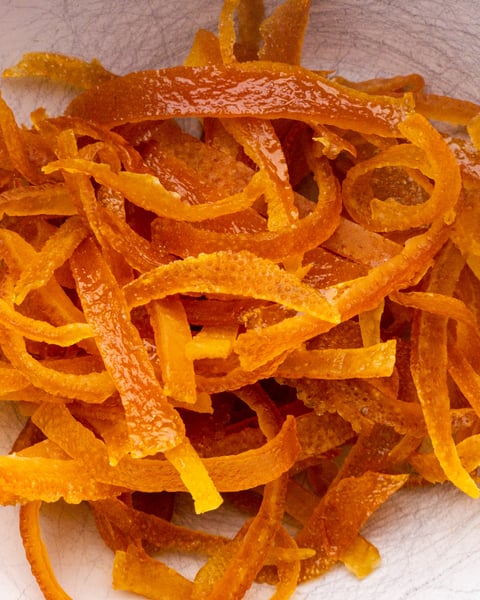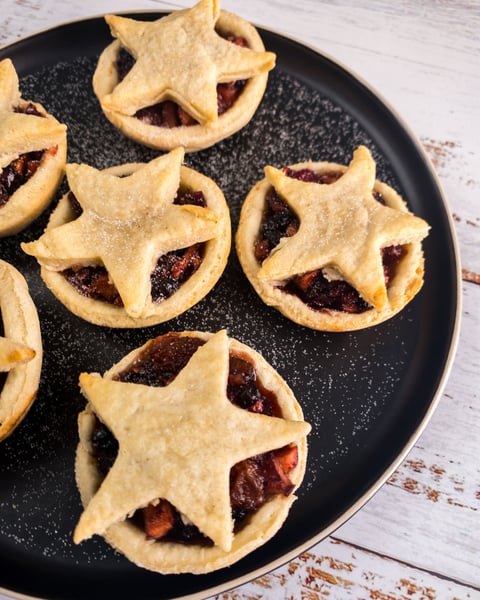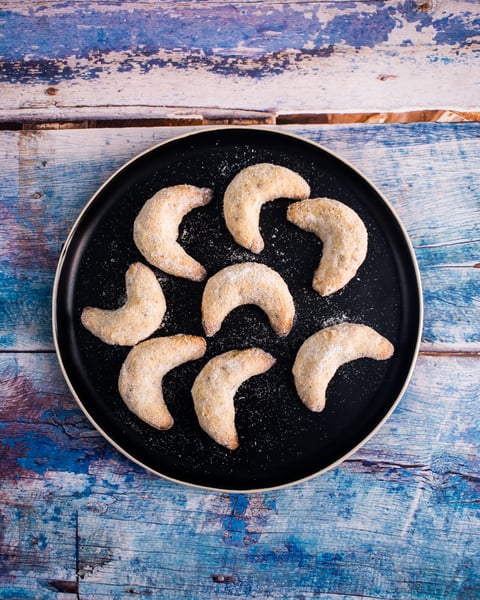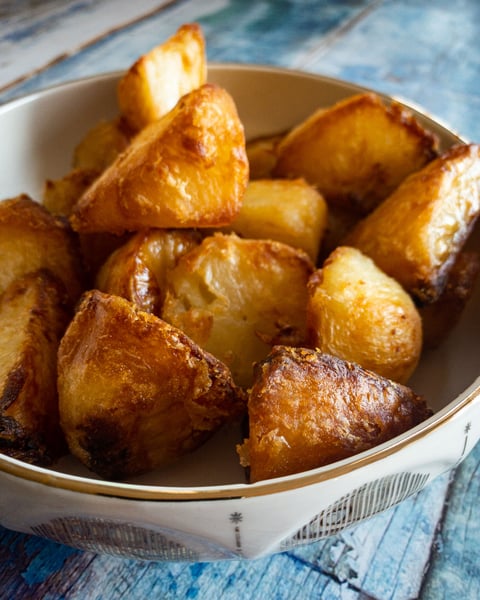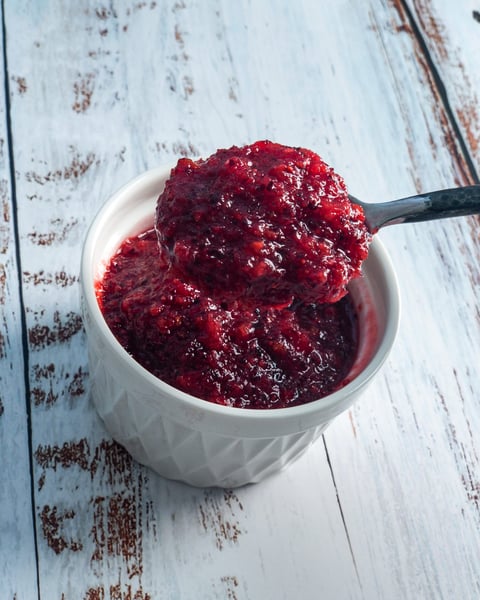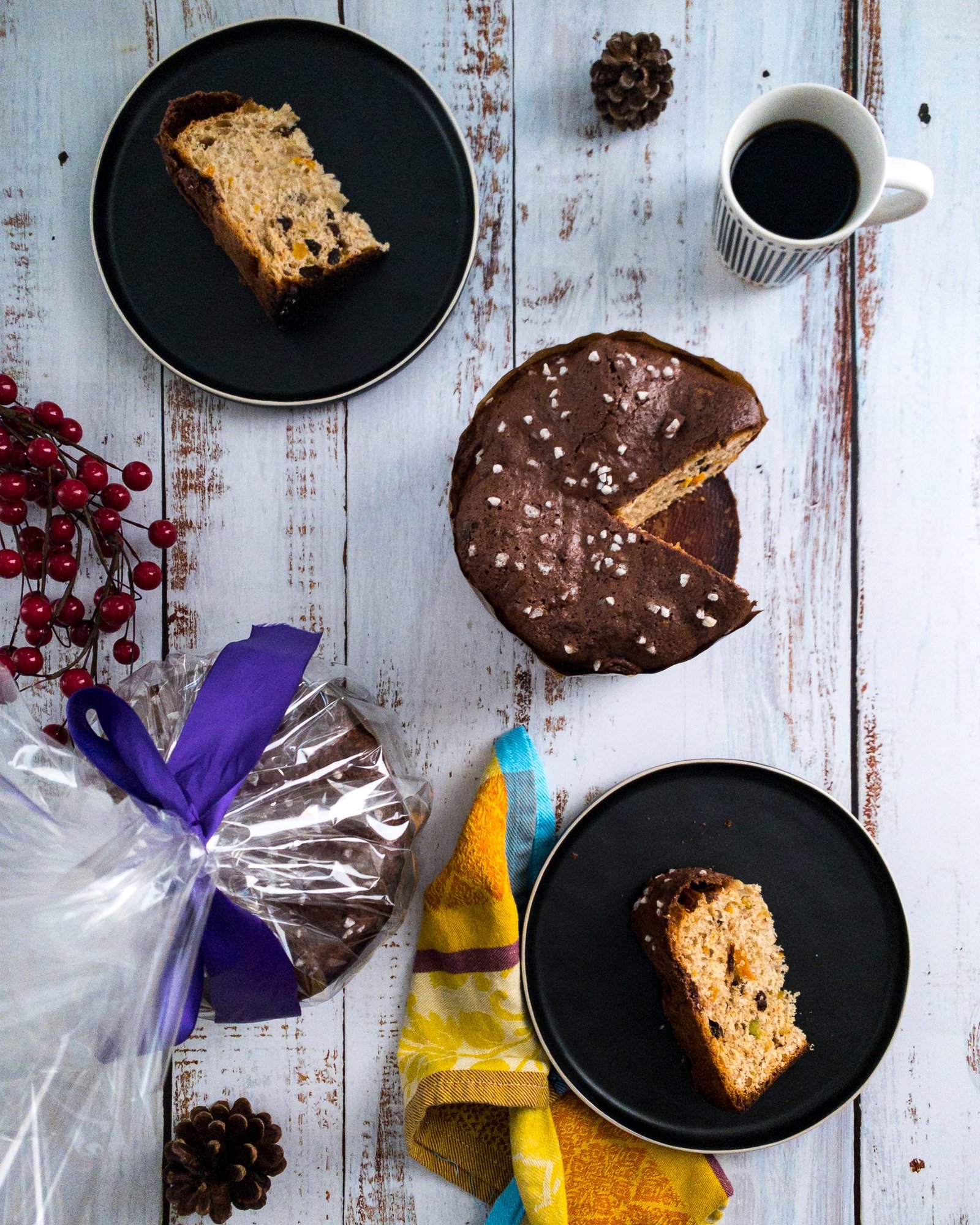
Naturally Leavened Panettone
Probably my favourite of all Christmassy baked goods: panettone. Waking up on a cold wintery morning feels 10× better when you get to dunk a huge slice into a hot cup of black coffee. I prefer the classic combination of dried fruit and nuts, but chocolate versions are great too. If you'd prefer a chocolatey panettone, you can substitute the dried fruit for chocolate chips.
Made just like the traditional panettoni of old, this recipe requires the use of natural yeast and a fermentation period of over 30 hours. Most of this time is inactive, though it takes approximately 1.5 hours of physical work. Believe me when I say it is worth the effort!
This recipe yields 2 panettoni with a weight of 750g, which will fit perfectly into a 6" panettone mould. Adjust the weight depending on your mould size. I have written a suggested baking schedule in the recipe notes at the bottom of the page to help plan your bake.
Ingredients
Stiff leaven (feed three times)
- 24g sourdough starter
- 24g high-protein bread flour
- 12g water at 28–30ºC
Initial Dough
- 57g stiff leaven
- 200ml water at 28–30ºC
- 1/8 tsp instant yeast (optional)
- 83g castor sugar
- 350g high-protein bread flour
- 3 large egg yolks
- 83g soft butter
Final Dough
- 100% initial dough
- 55g water at 28–30ºC
- 16g honey
- 1 tbsp vinalla extract
- 2 large egg yolks
- 168g high-protein bread flour
- 6g salt
- 130g soft butter
- 82g castor sugar
- 40g raisins
- 40g sultanas
- 100g candied orange peel
- 75g candied lemon peel
- 65g shelled pistachios
Glaze (optional)
- 80g castor sugar
- 5g rapeseed oil
- 10g corn starch
- 4g cocoa powder
- 1 large egg white
- pearl sugar to garnish
Method
- Unless you have a traditional Italian pasta madre to hand, you'll have to convert your liquid sourdough starter into a stiff leaven through a series of feedings. Start by taking 24g of recently fed and active, liquid sourdough starter or pasta madre and mix well with 24g of flour and 12g of water at 28–30ºC.
- Four hours later, take 24g of your leaven and mix well with 24g of flour and 12g of water, discarding the remainder of the leaven.
- After another four hours, repeat the process again for a third time by taking 24g of your leaven and mixing well with 24g of flour and 12g of water, discarding the remainder of the leaven.
- After another fermentation period of four hours, your leaven will be ready to be mixed into a first initial dough. Put the water into a large mixing bowl and bloom the yeast in it (if using), then using your fingers, try to break up the leaven into the water to help the natural yeast spread.
- Add the egg yolks, flour and sugar into the bowl and use your hands to mix them all into a rough dough.
- Cut the softened butter into cubes and gradually incorporate it into the dough in stages by kneading the dough. Once the butter is fully incorporated, leave your dough to rise at room temperature, covered in cling film.
- Twelve hours later, it's time to mix the final dough. Mix the honey and vanilla extract with the water and pour on top of the initial dough, then add the flour, salt and egg yolks. Knead it all together (don't worry about knocking any of the air out as it will rise again).
- Add the sugar gradually in stages. Once all mixed in, chop the butter into cubes and gradually incorporate into the dough.
- Combine the raisins, sultanas, candied orange peel, candied lemon peel and shelled pistachios in a separate bowl, then pour into your dough and knead until evenly spread throughout.
- On an unfloured surface, pick the dough up and slap it down and fold the dough over on the board. Keep repeating until the dough is no longer sticking so much to the board and the dough has formed some tension.
- Leave the dough to rest in a bowl covered in cling film for an hour. After that, perform a series of stretches and folds by taking the edge of the dough on one side and pulling the dough up and over to the centre before turning the bowl and repeating all the way around. Leave for another half an hour to rest, covered in cling film.
- It's now time to divide the dough into individual panettone. I use a 6" mould and find 750g is roughly the right size. Place the dough on your work surface and use a metal bench scraper sprayed lightly with a little cooking oil to cut and separate the dough into 750g dough balls. Shape them roughly into tight spheres and place them into the panettone moulds.
- Leave the panettoni to proof in a humid and warm environment at around 29–30ºC for 4–6 hours. You'll know when they're done when the dome is near the top of the moulds. If you don't have a controlled proofing environment, you can cover the moulds in cling film and put in the oven with just the light on but keep an eye on them to make sure they don't proof too quickly (and make sure to remember to take them out before turning the oven on).
- Once the panettoni has finished proofing, preheat the oven to 175ºC/350ºF. Mix the glaze ingredients and put into a piping bag, if using, then spread evenly on top of the panettoni before sprinkling with pearl sugar.
- Bake in the oven for 35–50 minutes, depending on the size of the panettone (I find 45 minutes is enough for a 750g panettone). Ensure fully cooked before removing.
- After the panettoni are fully baked and removed from the oven, use two skewers on each panettone to pierce through the bottom from one side to the other and then hang them between two equally high objects for 12 hours or overnight. Try to make sure the skewers are evenly spaced in order to make the panettone hang evenly. This step is important to prevent the panettoni from collapsing in on themselves while they are cooling.
Notes
Suggested baking schedule:
Day 1:
- 08:00: First leaven feed
- 12:00: Second leaven feed
- 16:00: Third leaven feed
- 20:00: Mix the initial dough
Day 2:
- 08:00: Mix the final dough
- 08:30: Slap and fold
- 09:30: Stretch and fold
- 10:00: Divide the dough and shape
- 14:00/16:00: Glaze and bake
- After baking: Hang panettone upside down for 12 hours or overnight
